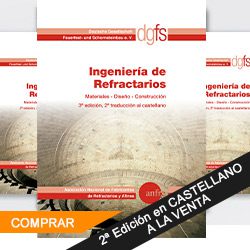A shortage of graphite electrodes for usage in electric arc and ladle furnaces will continue to affect steel mills, sources told S&P Global Platts.
In recent years electrode makers have reduced capacity, with some shuttered for good as their mill customers bought competitively priced semi-finished products and re-rolled rather than melting scrap.
One supplier, who did not want to be identified, said around 200,000 mt/year of electrode capacity had exited the market as a result. At the same time China has cut graphite electrode capacity of late, by up to around 50%, according to numerous producers, amid government-mandated closures to curb emissions.
The supplier said Chinese annual electrode exports would likely fall from around 200,000 mt in recent years to 100,000 mt. This means the country is producing much fewer ladle furnace electrodes.
In previous years China had been so cheap other suppliers had bowed out of the market; companies would have to charge around double or triple for a ladle furnace compared to an electrode for EAF consumption to generate the same EBITDA, another supplier who did not want to be identified said, so they may reserve some volume, but prices will rise dramatically.
Chinese electrode capacity is also increasing at the moment, aided by exceptionally cheap scrap supply after Beijing oversaw the closure of all illegal induction furnaces by the end of June. Also, during the «bad years» electrode producers ran down their stocks to generate cash as they could not get credit lines, sellers agreed. This means there is no stock on the ground and demand from mills — particularly EAFs — has increased sharply, taking electrode suppliers by surprise.
Producers cannot increase electrode production capacity, however, as there is a shortage of needle coke, a primary raw material — this is being exacerbated by cokemakers selling into other markets, such as the lithium-ion sector, after the downturn in demand from electrode producers.
Given these factors, electrode prices are rocketing. Long-term agreements for next year are likely to rise 100% or more, with «transactional» buyers paying more than those on longer-contracts, sellers said. «Everyone wants to be a long-term customer now,» one seller said.
Another producer said mills were «screaming» for electrodes, but they had to get in line. There was a real threat of «rolling outages,» he said, as mills ran out of electrodes and had to await new deliveries.
Mills were using scrapped or questionable electrodes to stay in operation, he said. It takes six-10 weeks to make an electrode, he said, while it takes six-eight hours to use one.
Electric arc furnaces will typically operate nine graphite electrodes at any one time, and they comprise 1-2% of the cost of steelmaking, according to electrode sellers. A recent spot deal in China had been done at $11,000/mt for a 24 inch electrode, he said, while another supplier said spot prices were $10,000/mt — far higher than the contract prices being paid by mills, with Chinese material now trading at a premium to electrodes from elsewhere as people scrambled for tons.
A large Chinese producer was putting out weekly prices that were being followed by others, sources said. «We haven’t even started our booking process for next year, and some competitors are already sold out through the first half,» one said. Sellers were torn on electrode pricing dynamics going forward.
While half-yearly and quarterly deals are seen, with deliveries monthly or quarterly depending on customer, the majority of contracts are annual. Some suppliers said they would not look to short-term profitability above longer-term deals, but others said they «hated» annual fixed priced agreements, which meant they were taking the majority of risk on behalf of mills.
This, alongside some coke suppliers looking to move to quarterly pricing from annual, could lead to an attempted shift to shorter-term electrode pricing, one said.



